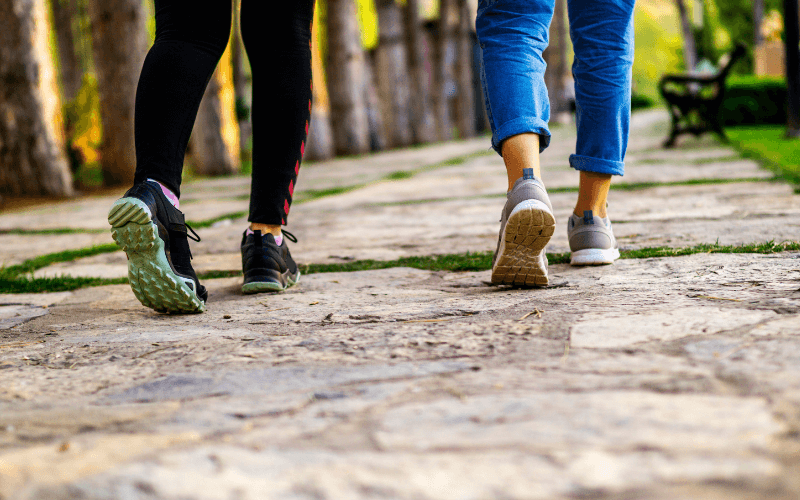Your feet bear the full impact of your daily activities. Walking, exercising or sitting on the sofa – everything has consequences for your lower limbs.
Moving causes problems if you do it the wrong way. Not moving causes other issues, so understanding the effect of everyday activities is vital for healthy feet.
1. Walking
Walking is the easiest form of exercise and we all should do it daily. Done properly, your weight is evenly distributed and absorbed by your feet, and your muscles and soft tissues stay strong and healthy. Walking is also essential for good circulation and blood pressure, a healthy heart and improved energy levels.
However, it’s essential to walk in the right footwear. This must provide support, cushioning and stability. Without this, you’ll end up with painful blisters, calluses and even strained or torn tendons and muscles.
2. Standing for Too Long
Your job may involve long hours on your feet. Although they are designed for moving and standing, too much of either without a break isn’t good for your joints and soft tissues.
This leads to problems such as plantar fasciitis, bunions and heel spurs (a bony growth caused by ligament stress). Standing or constantly moving on a hard surface is particularly detrimental.
Alleviate the problems by wearing supportive shoes and socks that wick away moisture (as damp feet lead to fungal infections). If possible, take regular breaks and sit down to rest. In addition, a bit of gentle walking or stretching helps to restore circulation.
3. Sitting for Too Long
A sedentary lifestyle has its own side effects. In addition to cardiovascular issues (high blood pressure and high cholesterol for example), too much sitting leads to weak and stiff muscles and tendons.
Falls, sprains and tears are sure to follow, not to mention backaches and poor posture. In addition, tight calf muscles can be one cause of plantar fasciitis – an extremely painful and debilitating condition.
Again, regular breaks to move around and stretch are vital. If you’re doing office work and you have a standing desk this helps immensely, and standing on an anti-fatigue mat will make you more comfortable.
4. Driving
This isn’t just about sitting down. When you drive long distances you’re placing a lot of strain on the soft tissues of the heels, ankles and Achilles tendon, as you tense and move your ankles and lower leg muscles repeatedly.
These small, repetitive movements have an impact on your legs and feet. In addition to circulation issues, a lot of driving can weaken ligaments and lead to sprains and strains.
Make sure you stop regularly to walk about and stretch to ease tension and get the blood flowing again.
5. Exercise
We all need this, but exercise often involves repetitive movements, sudden changes of direction and intense pressure on joints, muscles and soft tissues.
Done correctly, exercise maintains strength, flexibility, good circulation and balance, but poor technique leads to sprains, fractures, muscle tears, metatarsalgia and Achilles tendonitis.
Protect yourself by warming up and cooling down every time you exercise. Wear the best shoes for your sport and check with a trainer to ensure you have the right technique – the best way to prevent injury.
Never overdo things – take days off from high-impact activities like running or hiking. Recover with low-impact exercises like yoga or Pilates to gently maintain strength and flexibility.
Regular Maintenance at Feet By Pody
Your feet deserve regular care. After all, you won’t get far without them.
Our experienced podiatrists are here to help.

